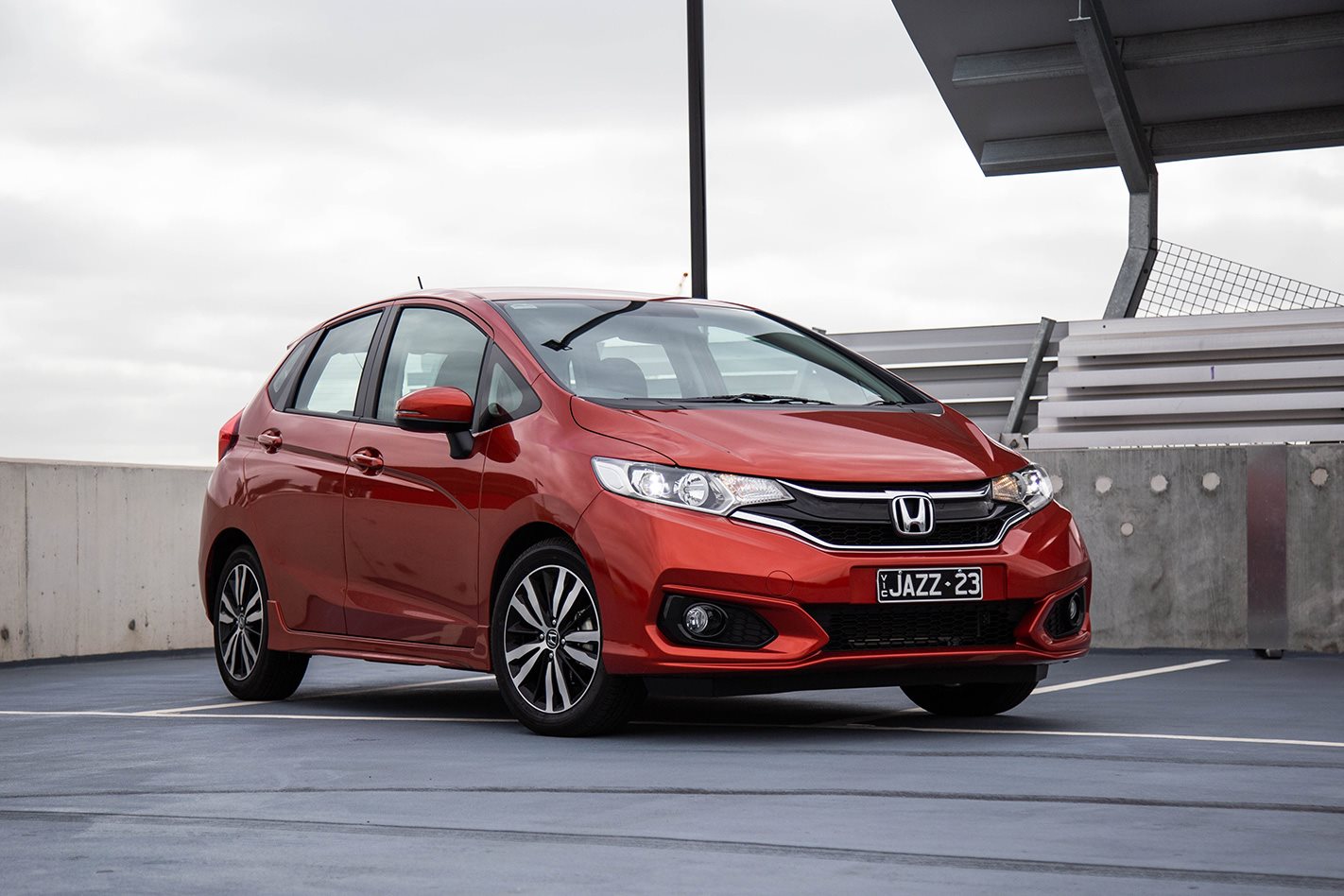
Having burst on to the scene in the midst of 2014, the Honda Jazz is beginning to age, albeit gracefully thanks to a mid-life update in Q3 of 2017.
It remains a plucky and likeable city car with versatility delivered in spades thanks to ingenious interior packaging, and its petite agile stature.
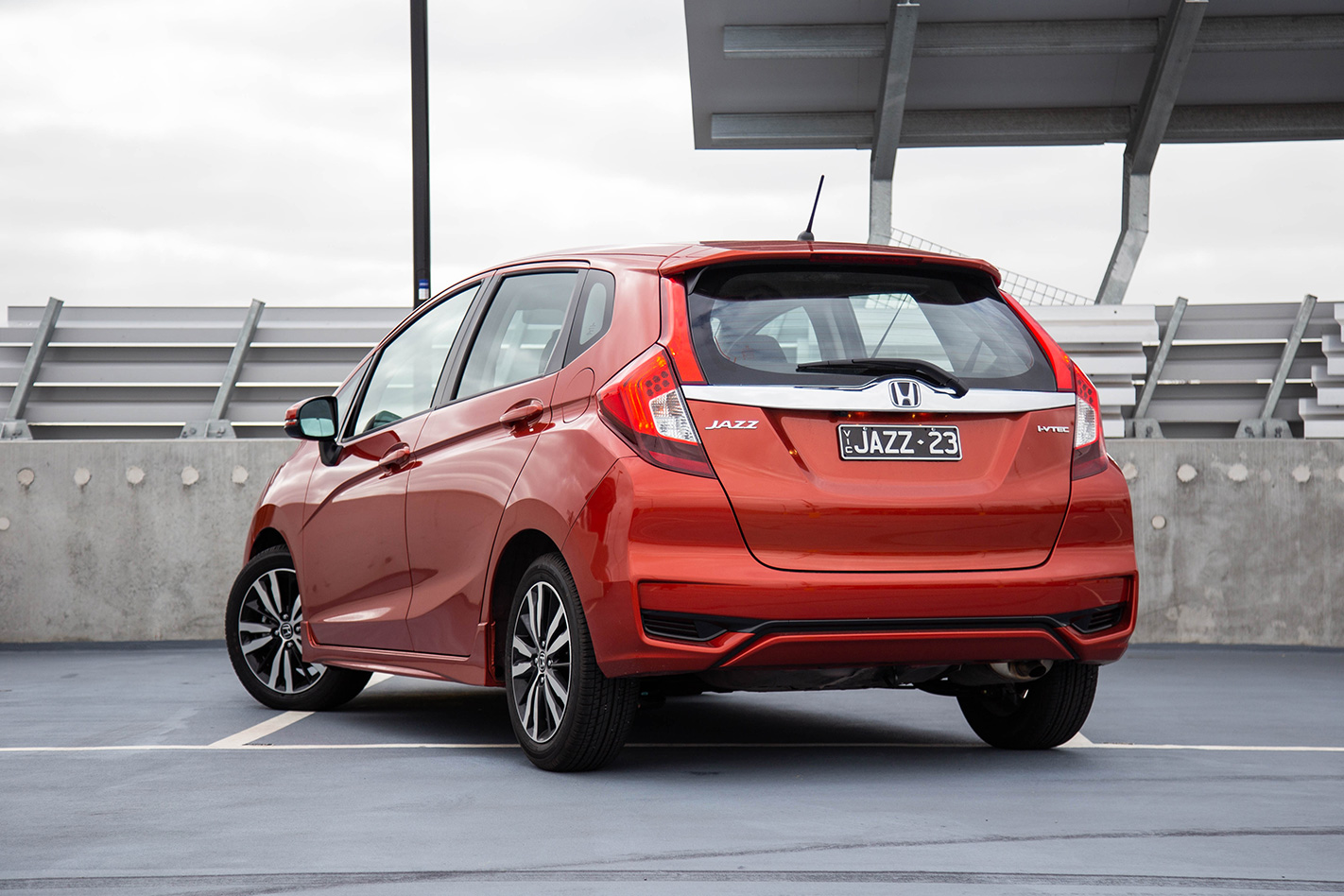
If Porsche is the Rolex of cars, the Honda Jazz might be likened to a trusty Seiko diver. It just works, in certain ways unlike any of its competitors. Nothing on or in the car is superfluous; and while it mightn’t be awe-inspiring, as a tool to aid the daily hustle and bustle of city living – it certainly fits the bill nicely, especially at its keen price point.
What is it?
The Jazz is Honda’s smallest offering on the Australian market and is a no-frills urban-dweller whose Swiss army knife-like versatility manifests in an odd companion-like charm that’s all its own.

The VTi-S occupies the mid-tier of the Jazz range, sitting above the bare-boned VTi (starting at $14,990), and below the up-spec VTi-L (starting at $22,490).
There’s no shortage of rivals for the Tokyo brand’s pint-sized offering. You’d likely be cross-shopping with the Mazda2 (Maxx), Toyota Yaris (SX) and Kia Rio (S).
It’s been critiqued for its busy styling, but it’s aged quite gracefully in the face of its even busier Civic sibling.
How much is the Honda Jazz VTi-S?
The VTi-S nips under $20,000 with a list price of $19,990. The only thing you’ll find on the options list is metallic paint at $495 – which you’ll be ticking unless you like Rallye Red, which is the only standard colour.
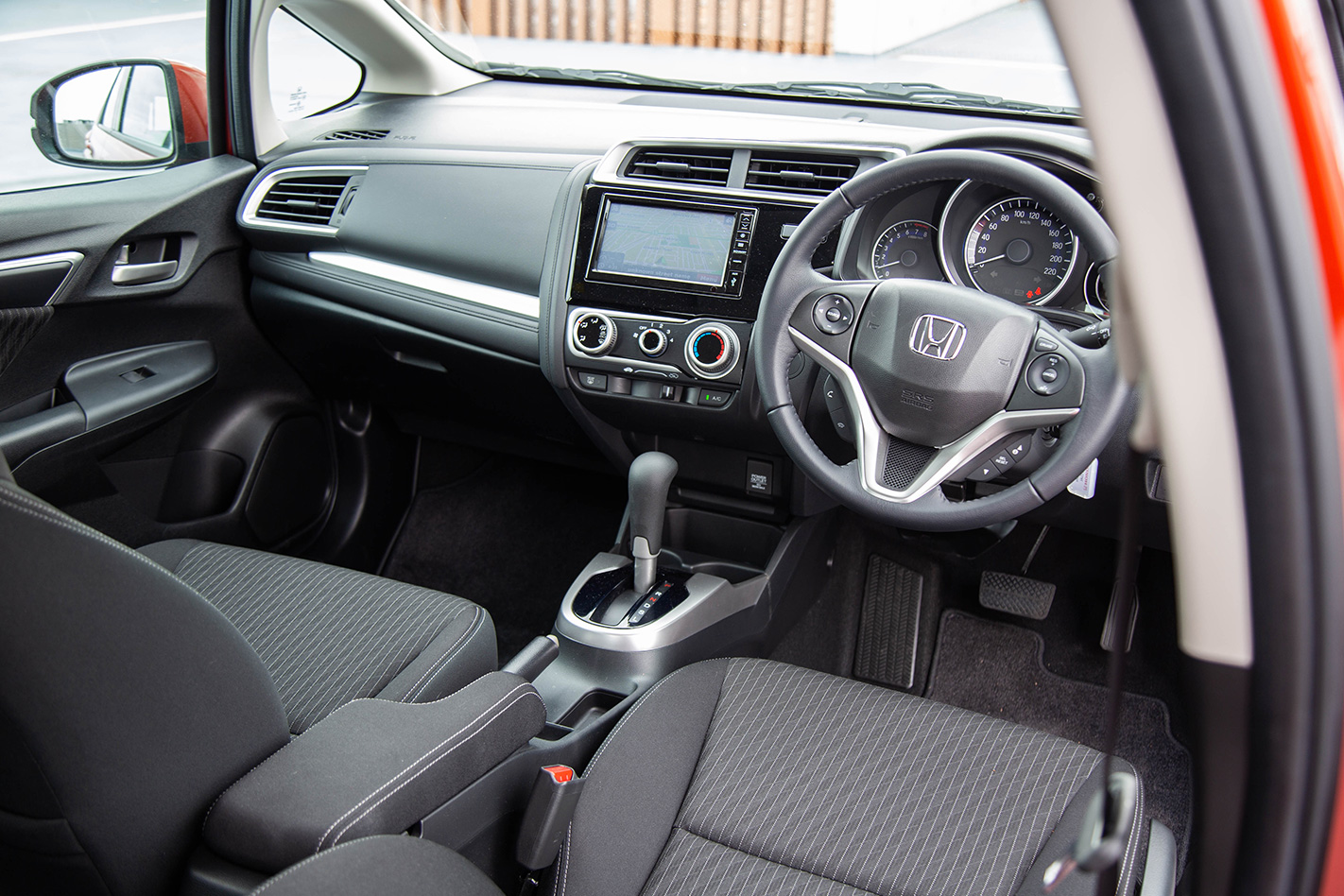
The Jazz VTi-S also comes with a five-speed automatic as standard, something you’d have to pay extra for on the base-model VTi. You also get long-lived LED low beam headlights, side skirts, a small spoiler and fog lights, as well as 16-inch alloy wheels.
Inside, there’s a leather-trimmed steering wheel, fold-away mirrors and a 7.0-inch colour touch screen with sat-nav and Bluetooth as well as USB and HDMI ports.
It also comes with a five-year warranty, rolled out by Honda across its entire range in July of 2017. However, the Jazz’s biannual service intervals might be a strike against it compared to some rivals that only need to visit the dealership once a year.
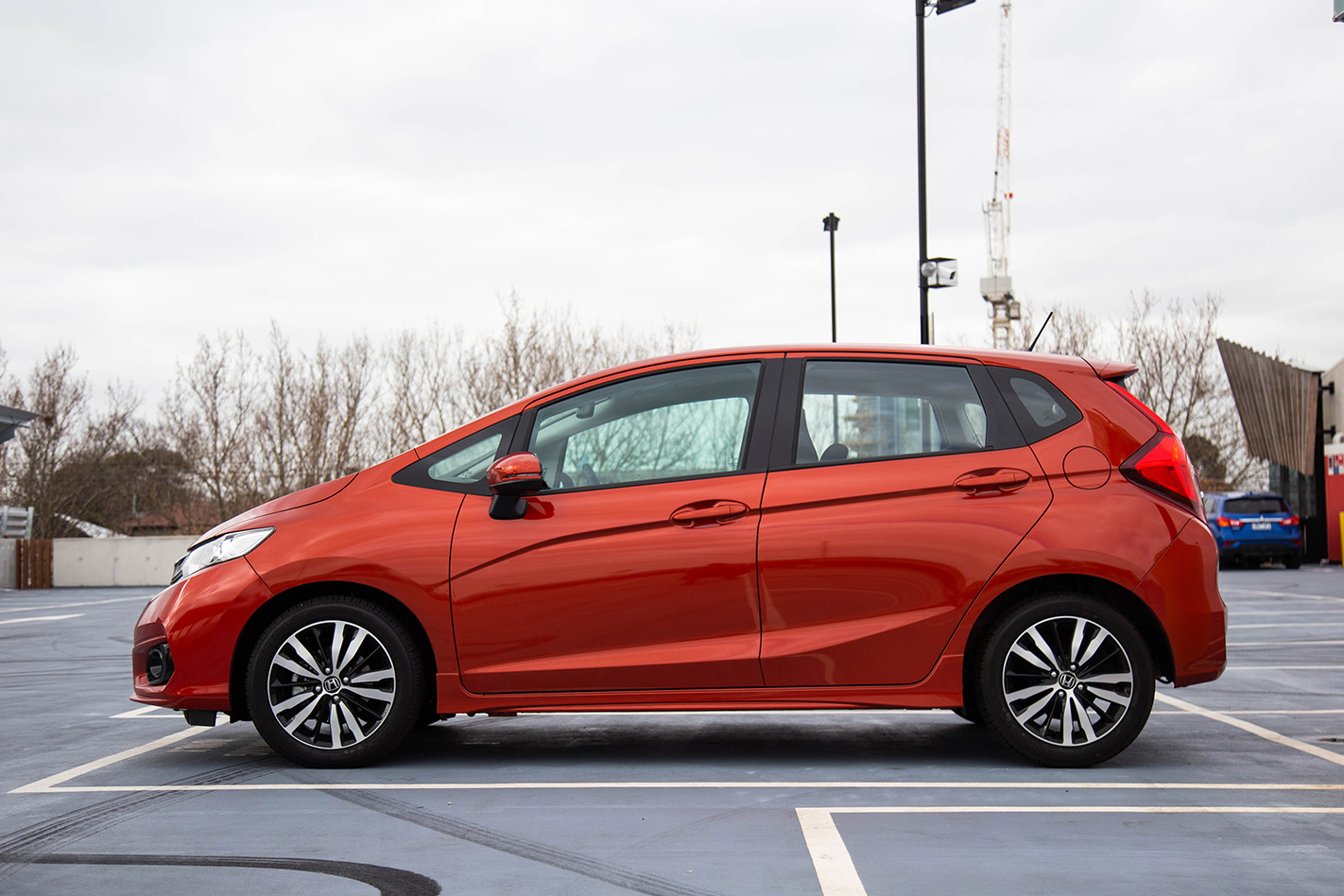
Who is it for?
The Jazz is best suited for anyone frequently forced to navigate the urban jungle, but would also make a capable first car for the bushy bright-eyed young driver.
Its emphasis on cabin versatility should especially endear it to couples and small families who only have the space or budget for one car. By easily morphing from a five-seater hatch to a two-seater cargo box, the Jazz is able to adapt to a wide range of uses better than many other vehicles in its class.
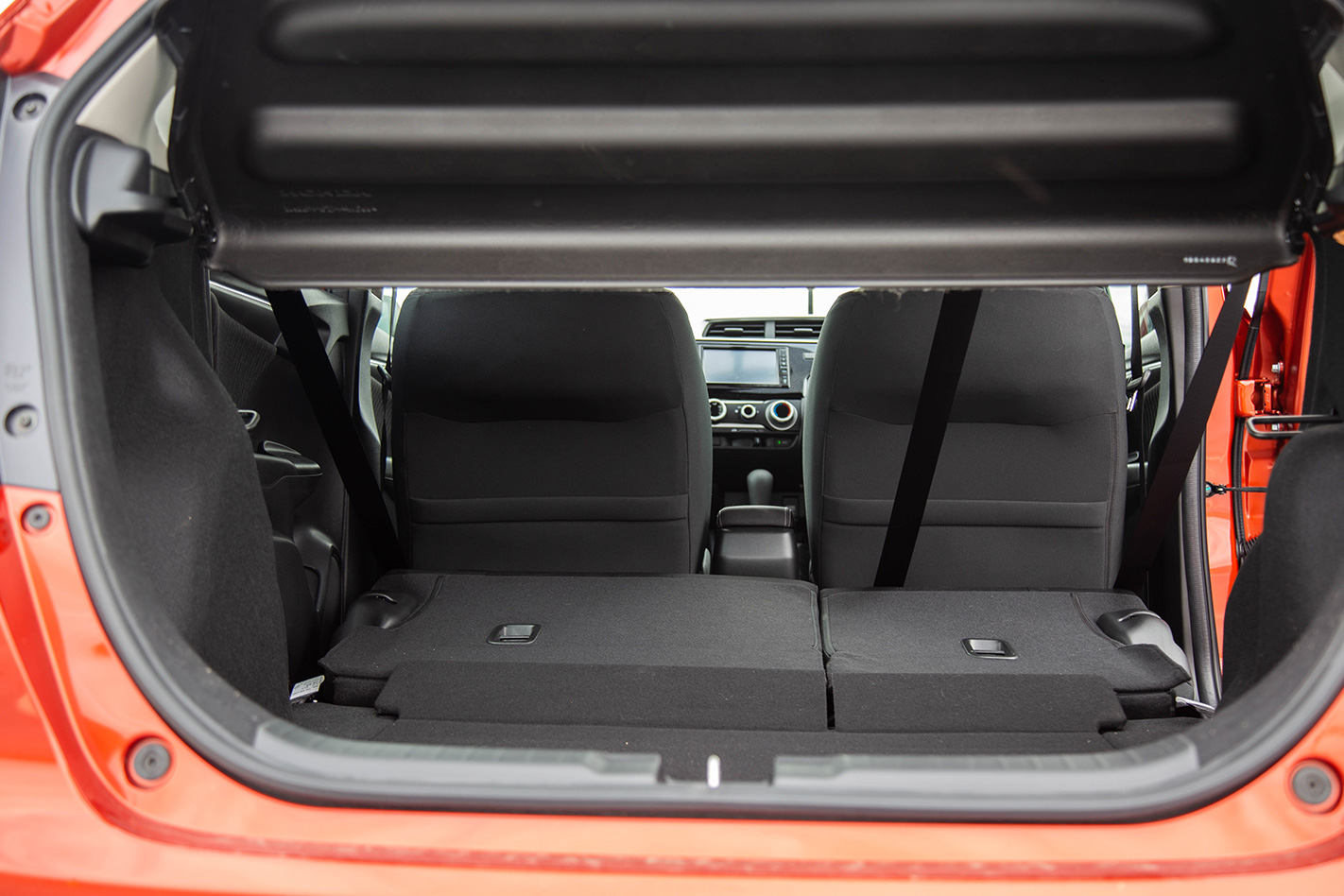
Is the Honda Jazz VTi-S easy to live with?
Thanks to its smart packaging and effortless inputs required to get it to move, the Jazz is tremendously easy to live with.
The glasshouse is taller and its girth is slimmer overall than any of the mentioned rivals, which makes the most of gaps in traffic as well as offering great visibility. It’s also shorter than the Mazda2 and Kia Rio.

The interior is very minimal, with pure function at the forefront. It might lack the visual interest of the Mazda2, but it’s a clean and uncluttered presentation that should prove appealing to most eyes.
Climate controls are easy to use with just six simple touchpoints. The buttons on the 7.0-inch touchscreen may be small and hard to use while driving, though the steering wheel controls largely provide a solution.
There’s also a 12v plug located in the storage bin under the centre stack, and a USB and auxiliary audio port to the side of the infotainment screen.
Hard plastics are the norm in this sector, but in the Jazz they don’t have the cheap and nasty feel of some competitors. A leather-wrapped steering wheel and cloth panels on the door cards help introduce a warmer feel to the cabin as well.

Moving to the back seats is where the real magic happens. Generous amounts of headroom can be attributed to the Jazz’s tall turret, and legroom is great for its class.
The hump in the floor pan beneath the front seats that accommodates the fuel tank also doubles as a comfy quasi footrest for those in the back.
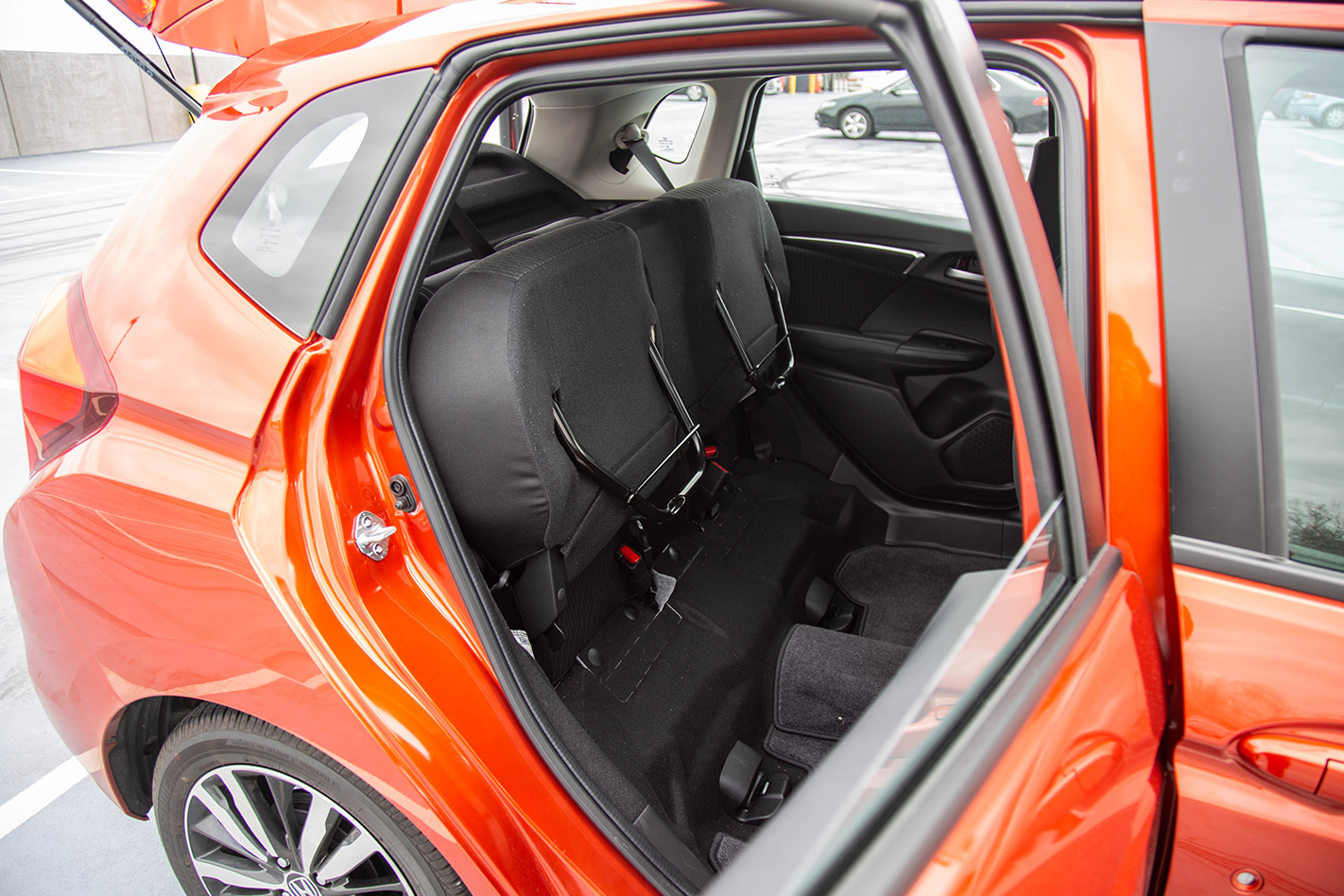
Honda calls the Jazz’s rear bench ‘Magic seats’, and to be fair that’s an apt descriptor. They fold flat and flush with the very low boot floor, delivering a sizable 1314-litre capacity and offering the ability to turn your Jazz into a cute micro van – but the seat bases also fold up for occasions when you might need to use the car’s full cabin height, like for a TV or large pot plant. See? Magic!
Even with the rear seats in place, the Jazz can carry a load of stuff thanks to its 354-litre boot volume, which is bigger than some cars from the size class above!
How well does the Honda Jazz VTi-S drive?
How well the Jazz drives largely depends on where you drive it. As we said, the car shines as an inner-city car. It’s effortless to drive with very light steering that, for the most part, is fairly direct at lower speeds.
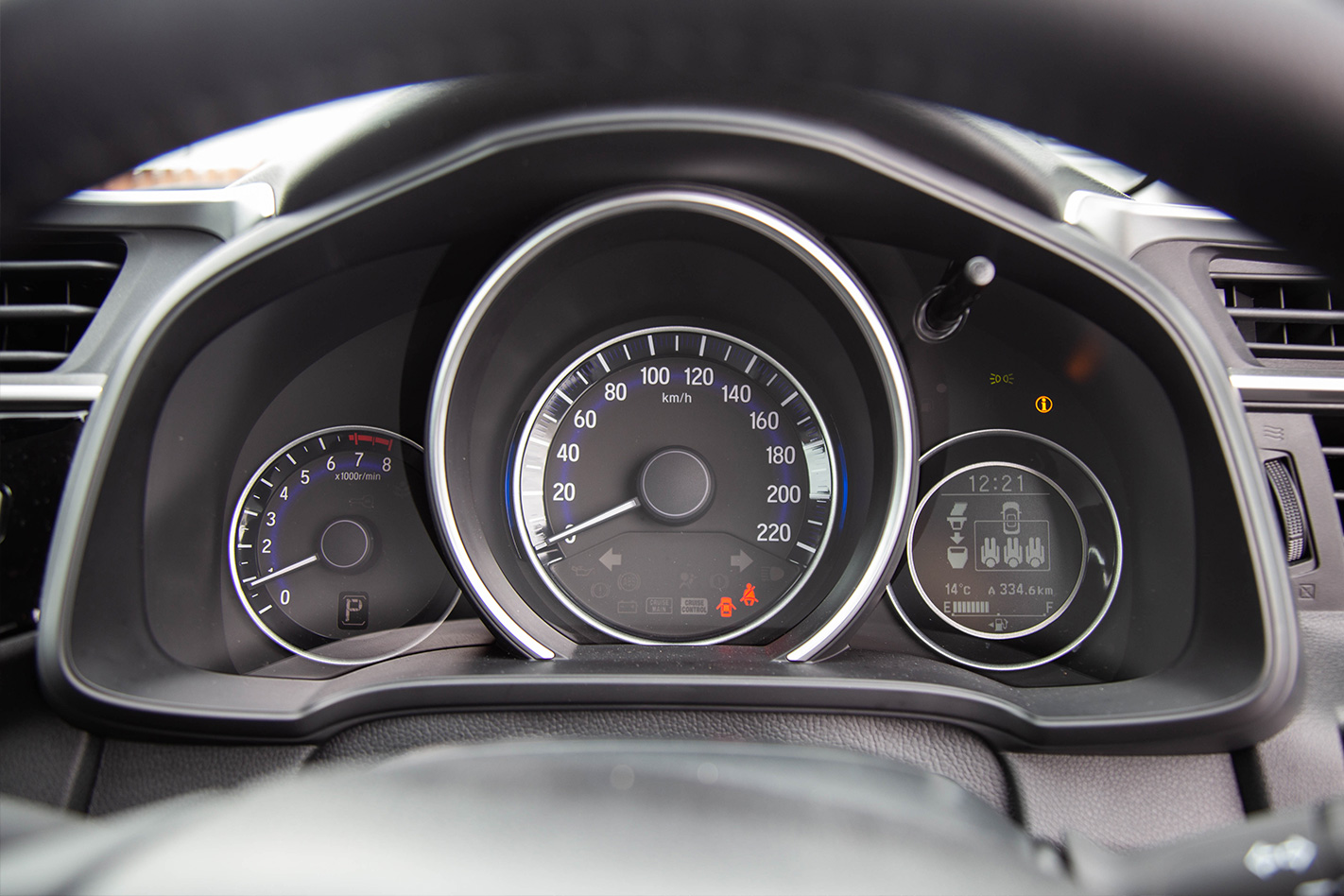
The accelerator lacks low-speed response, and is likely calibrated with a lazy pedal mash in mind. It keeps up with traffic perfectly well, though, and the fact that the entire thing weighs just 1095kg (at times it feels lighter), means it doesn’t take much thrust to get to speed.
The CVT auto does its job, but isn’t the most refined unit at lower speeds or in stop-start traffic.
About town, suspension comfort is perfectly adequate. It soaks up speed bumps and smooths out most of the little undulations in many of Australia’s pockmarked urban roads.
In the city, it’s quite fun to drive. Thanks to its lithe dimensions, light kerb weight and throaty little naturally-aspirated 1.4-litre four-cylinder: you can boot it around with the sense of dynamism in many cases without even breaking the speed limit.
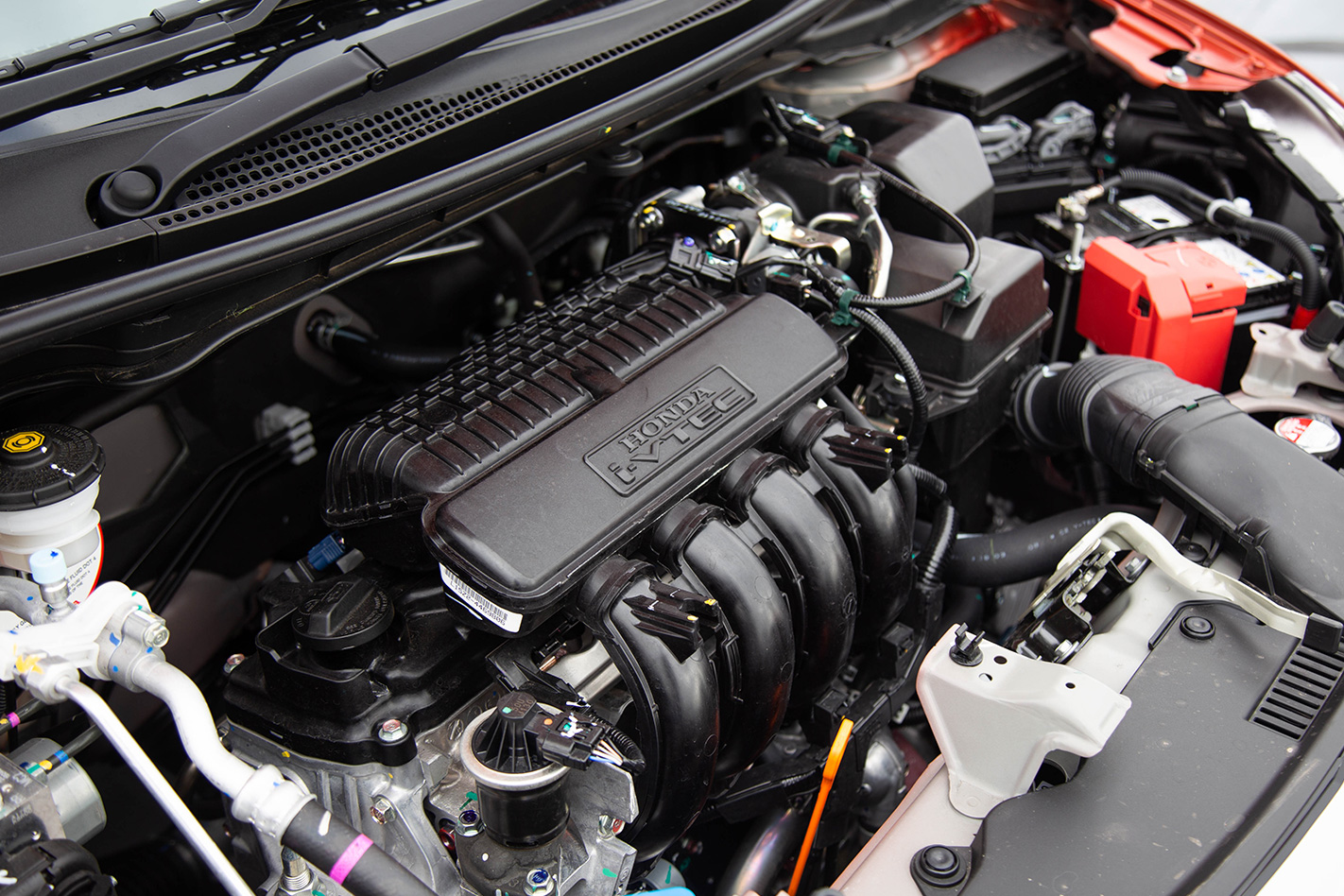
However, it all starts to come undone once you leave town for more free-flowing country roads. You’ll find that everything that makes it a tremendous city car becomes a detractor in its open road mannerisms.
The effortlessly light steering that’s a nicety in the grind of inner-city traffic quickly hampers the experience once intersections and roundabouts turn into longer, faster sweepers.
The suspension, too, can become unsettled when faced with off-camber bumps, but that’s something most city slickers won’t ever really need to worry about.
The Verdict
While it might be nearing the end of its lifecycle, the Honda Jazz remains a utilitarian charmer.
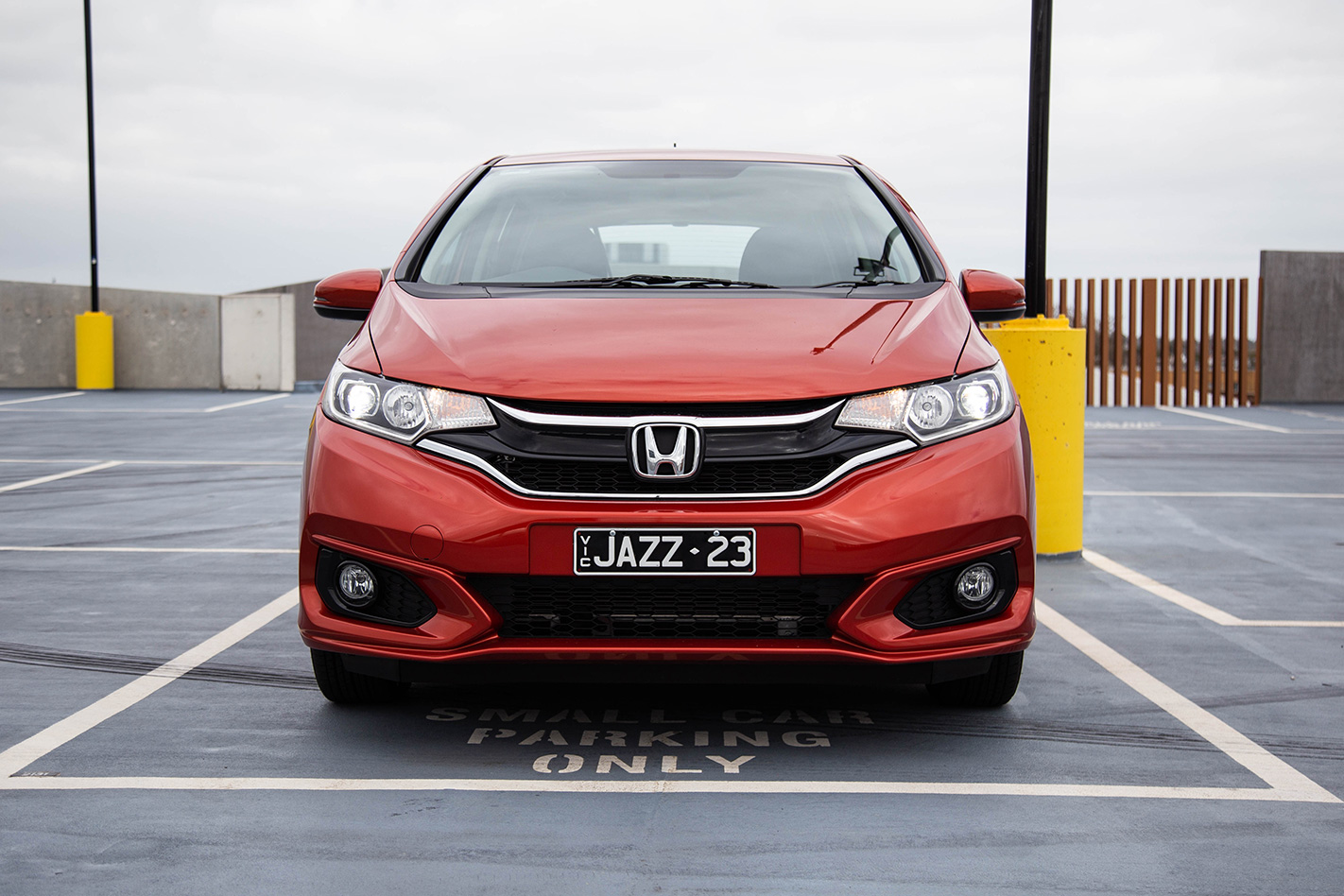
It’s an honest little trooper of a car that does everything you ask of it. Some competitors might offer more theatre, but the Jazz puts function over form.
With its smart packaging and effortless driving characteristics about town, the Jazz is a capable urban accessory. Some people buy cars that change their perceived identity. The Jazz won’t. It simply helps you to do you.




